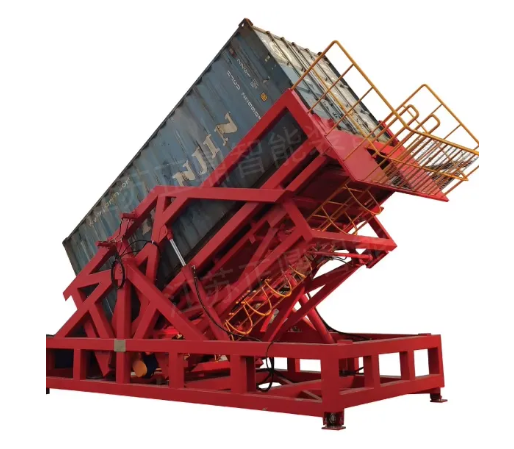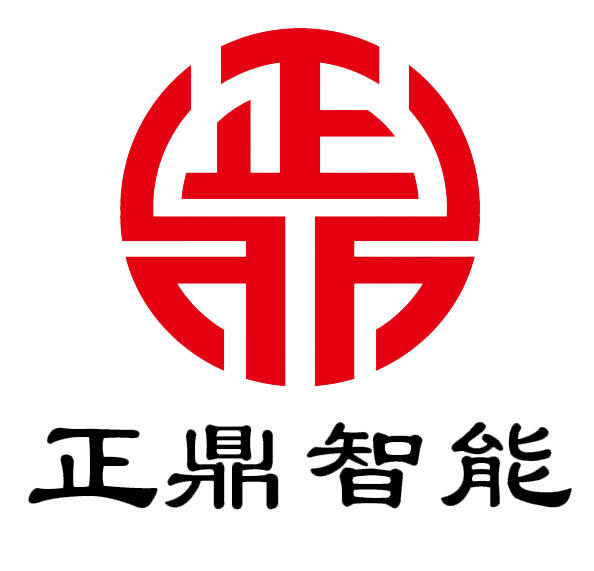تحديث عمليات مناولة المواد باستخدام حلول فعالة للتفريغ
في المستودعات والمنشآت الصناعية الحديثة، يُعد الكفاءة أمراً بالغ الأهمية للحفاظ على الميزة التنافسية والوفاء بمتطلبات الإنتاج المتزايدة باستمرار. مُفرغات الحاويات الهيدروليكية ظهرت كمعدات مُحدثة تُحدث تحولاً في كيفية تعامل المنشآت مع المواد السائبة، مما يُعزز الإنتاجية التشغيلية بشكل كبير. توفر هذه الآلات القوية بديلاً أكثر أماناً وكفاءة لمناولة المواد يدويًا، مما يمكّن الشركات من تبسيط عملياتها مع حماية قوتها العاملة.
يمثل دمج معدات تفريغ الحاويات الهيدروليكية في عمليات المستودع استثمارًا استراتيجيًا يُحقق عوائد من خلال تحسين كفاءة سير العمل وتقليل تكاليف العمالة وتحسين سلامة بيئة العمل. وبفضل أتمتة رفع وتفريغ الحاويات الثقيلة، فإن هذه الأنظمة تُلغي الجهد البدني والمخاطر المحتملة المرتبطة بعمليات المناورة اليدوية، كما تسهم في تسريع زمن المعالجة في الوقت نفسه.

الفوائد الأساسية لأنظمة تفريغ الحاويات الهيدروليكية
زيادة كفاءة العمليات
تُقلل معدات تفريغ الحاويات الهيدروليكية بشكل كبير من الوقت المطلوب لتفريغ الحاويات ومعالجة المواد. فما كان يتطلب من عدة عمال عدة دقائق لإتمامه يدويًا يمكن الآن إنجازه في ثوانٍ باستخدام هذه الأنظمة الأوتوماتيكية. وضمانًا للدقة، فإن الآليات الهيدروليكية تضمن عمليات تفريغ سلسة ومُحكمة تقلل من انسكاب المواد وهدرها، مما يسهم في بيئة عمل أكثر نظافة ويقلل من وقت التنظيف.
إن سرعة وكفاءة معدات تفريغ الحاويات الهيدروليكية تمكن المستودعات من معالجة كميات أكبر من المواد خلال فترات زمنية أقصر. وتمكن هذه الزيادة في سعة المعالجة المنشآت من التعامل مع طلبات أكثر، والوفاء بمواعيد تسليم أضيق، وتحسين استخدام مواردها. كما يضمن الطابع الأوتوماتيكي لهذه الأنظمة تشغيلًا متواجدًا طوال فترات العمل بأكملها، مما يحافظ على مستويات إنتاجية لا يمكن تزكيتها بالتعامل اليدوي.
تحسينات السلامة في مكان العمل
تعد اعتبارات السلامة من الأولويات القصوى في أي بيئة صناعية، وتقدم معدات تفريغ الحاويات الهيدروليكية تحسينات كبيرة في هذا المجال المهم. إذ تقوم هذه الأنظمة بمنع الحاجة إلى رفع وتفريغ الحاويات الثقيلة يدويًا، وبالتالي تمنع العديد من الإصابات المحتملة الناتجة عن الإجهاد والجهد المفرط والحركة المتكررة. كما لم يعد يتعرض العمال لمخاطر التعامل مع الأحمال الصعبة أو العمل في وضعيات غير مريحة.
الخصائص الأمنية المتطورة المُدمجة في مكبات الحاويات الهيدروليكية الحديثة، مثل أزرار الإيقاف الطارئ، وحماية من الحمل الزائد، وأنظمة الاحتواء، توفر طبقات متعددة من الحماية للعاملين والأشخاص الموجودين بالقرب. تضمن هذه الآليات الأمنية أن تظل عمليات مناولة المواد آمنة ومُحكمة، حتى عند التعامل مع أحمال كبيرة أو مواد خطرة.
المزايا التقنية وسمات التصميم
قدرات تحميل متعددة الاستخدامات
تم تصميم مكبات الحاويات الهيدروليكية الحديثة بحيث يمكنها استيعاب مجموعة واسعة من أحجام وأنواع الحاويات، من الصناديق القياسية إلى الحاويات المخصصة. تجعل هذه المرونة منها أصولاً لا غنى عنها في المنشآت التي تتعامل مع أنواع متنوعة من المواد وأشكال التعبئة. وتجعل قابلية التعديل في هذه الأنظمة من الممكن للشركات والمستودعات الحفاظ على الكفاءة بغض النظر عن الحاويات أو المواد المحددة التي يتم معالجتها.
تتميز أنظمة التفريغ المتطورة بوجود ضوابط سرعة قابلة للتعديل وخيارات وضعية تتيح التحكم الدقيق بتدفق المواد. تضمن هذه степень من التخصيص التعامل الأمثل مع مختلف المواد، من المساحيق الدقيقة إلى المواد الصلبة السائبة، مع تقليل إنتاج الغبار والخسارة في المنتج أثناء عملية التفريغ.
فوائد المتانة والصيانة
تضمن صلابة البناء في ماكينات تفريغ الحاويات الهيدروليكية موثوقيتها على المدى الطويل تحت الظروف الصناعية القاسية. تساهم المكونات الهيدروليكية عالية الجودة والإطارات المُعززة والتشطيبات الواقية في إطالة عمر المعدات وتقليل متطلبات الصيانة. تتحول هذه المتانة إلى تكاليف تشغيل أقل على مدى عمر المعدات وانقطاعات إنتاجية منخفضة للغاية للقيام بالصيانة.
إن إجراءات الصيانة الروتينية بسيطة وعادةً ما تتطلب وقت توقف قليل بفضل المزايا التصميمية التي تتيح الوصول السهل والقطع القياسية. إن بساطة الأنظمة الهيدروليكية مقارنة بالأنظمة الميكانيكية الأكثر تعقيداً تؤدي إلى وجود نقاط أقل لحدوث الأعطال وتسهيل التشخيص عند ظهور المشاكل.
استراتيجيات التكامل والتنفيذ
تحسين العمليات
يبدأ التنفيذ الناجح لمعدات تفريغ الحاويات الهيدروليكية بتحليل دقيق لعمليات مناولة المواد الحالية وتحديد النقاط المحتملة للتضييق. إن وضع محطات التفريغ بشكل استراتيجي داخل تخطيط المنشأة يمكن أن يخلق أنماطاً فعالة لتدفق المواد تقلل من مسافات النقل وتحسن حركة العمال. هذا التكامل المدروس يضمن الاستفادة القصوى من قدرات المعدات.
تُعد برامج التدريب للمُشغلين وفنيي الصيانة من العناصر الأساسية في عملية التنفيذ. يمكن للطاقم المدرب جيدًا تشغيل المعدات بكفاءة أكبر، والكشف عن المشكلات المحتملة قبل أن تتفاقم، والحفاظ على الأنظمة بشكل صحيح لضمان الأداء المستمر وطول العمر الافتراضي.
مرونة التوسع في المستقبل
عند تنفيذ معدات تفريغ الحاويات الهيدروليكية، من المهم للغاية أخذ النمو المستقبلي والاحتياجات التشغيلية المتغيرة بعين الاعتبار. يمكّن اختيار أنظمة ذات سعة احتياطية مناسبة ومزايا قابلة للتكيف المخازن من استيعاب زيادة في أحجام الإنتاج دون الحاجة إلى ترقية المعدات فورًا. هذا النهج الاستباقي يساعد في حماية الاستثمار الأولي ويضمن تحقيق قيمة على المدى الطويل.
يمكن دمج مكبات الحاويات الهيدروليكية الحديثة مع أنظمة مناولة المواد الآلية وبرامج إدارة المستودعات، مما يخلق فرصًا للمبادرات الآلية المستقبلية. تُمكّن هذه الإمكانية للتواصل المرافق من الاستمرار في التطور نحو عمليات أكثر تطورًا وكفاءة.
تحليل عائد الاستثمار
الفوائد المباشرة من حيث التكلفة
يؤدي تطبيق مكبات الحاويات الهيدروليكية إلى تحقيق فوائد مالية ملموسة من خلال تقليل تكاليف العمالة، وزيادة سرعة المعالجة، وتحسين كفاءة مناولة المواد. وحدها المدخرات في العمالة تُبرر في كثير من الأحيان الاستثمار الأولي، حيث يُصبح عدد أقل من العمال مطلوبًا لمناولة نفس كمية المواد. علاوة على ذلك، يسهم تقليل التلف والهدر في المنتجات في تحسين الاقتصاد التشغيلي.
تساعد ميزات الكفاءة في استهلاك الطاقة في الأنظمة الهيدروليكية الحديثة في تقليل تكاليف التشغيل، في حين أن البنية المتينة ومتطلبات الصيانة القليلة تقلل من المصروفات المستمرة. تساهم هذه العوامل في حسابات التكلفة الإجمالية لملكية (TCO) المواتية وعادةً ما تؤدي إلى تحقيق عائد استثمار إيجابي خلال إطار زمني معقول.
القيمة غير المباشرة
وبالإضافة إلى التوفير المباشر في التكاليف، فإن آلات تفريغ الحاويات الهيدروليكية تولّد قيمة كبيرة من خلال تحسين سلامة مكان العمل وتقليل المصروفات المتعلقة بالإصابات. تساهم تكاليف التأمين الأقل، وانخفاض مطالبات تعويض العمال، وتقليل الغياب الناتج عن الإصابات جميعها في الفوائد المالية الشاملة لهذه الأنظمة.
غالبًا ما تتيح القدرات التشغيلية المُحسّنة التي يوفرها جهاز تفريغ الحاويات الهيدروليكي للمؤسسات إمكانية الاستفادة من فرص أعمال إضافية وتوسيع نطاق خدماتها. ويمثل هذا الزيادة في القدرة على النمو ميزة استراتيجية يمكن أن تقود إلى توسعات طويلة الأمد وزيادة في حصة السوق.
الأسئلة الشائعة
ما أنواع الحاويات التي يمكن لجهاز تفريغ الحاويات الهيدروليكي التعامل معها؟
صُممت قلابات الحاويات الهيدروليكية لاستيعاب مجموعة واسعة من أنواع الحاويات، بما في ذلك الصناديق الصناعية القياسية، والحاويات المُصممة حسب الطلب، وسفن مناولة المواد المتخصصة. يمكن تهيئة معظم الأنظمة للتعامل مع أحجام وأشكال مختلفة، مع حمولات تتراوح عادةً بين مئات وآلاف الأرطال.
كيف تُحسّن أجهزة تفريغ الحاويات الهيدروليكية سلامة مكان العمل؟
تُلغي هذه الأنظمة الحاجة إلى رفع وتفريغ المواد يدويًا، مما يقلل من خطر الإصابات الناتجة عن الإجهاد والحوادث. تحتوي هذه الأنظمة على آليات أمان متعددة، بما في ذلك وظيفة الإيقاف الطارئ، وحماية من زيادة الحمل، وأنظمة احتواء، مع توفير عملية مُحكمة ومتوقعة تحمي المشغلين والعاملين بالقرب منهم.
ما هي أعمال الصيانة المطلوبة لمكبات الحاويات الهيدروليكية؟
تشمل الصيانة الدورية عادةً فحص مستويات السائل الهيدروليكي ومراقبة ضغط النظام وفحص الختم والتنظيف العام. تعني بساطة الأنظمة الهيدروليكية أن متطلبات الصيانة تكون عمومًا ضئيلة، حيث تكون معظم المهام وقائية بطبيعتها ويُمكن لأفراد الصيانة المدربين أداؤها بسهولة.
